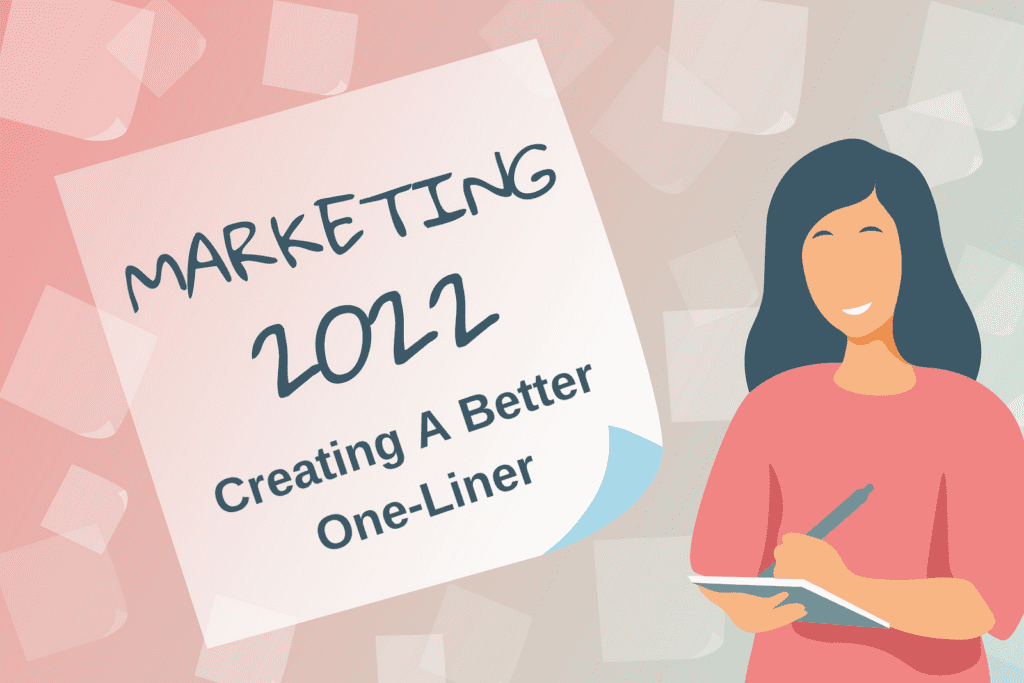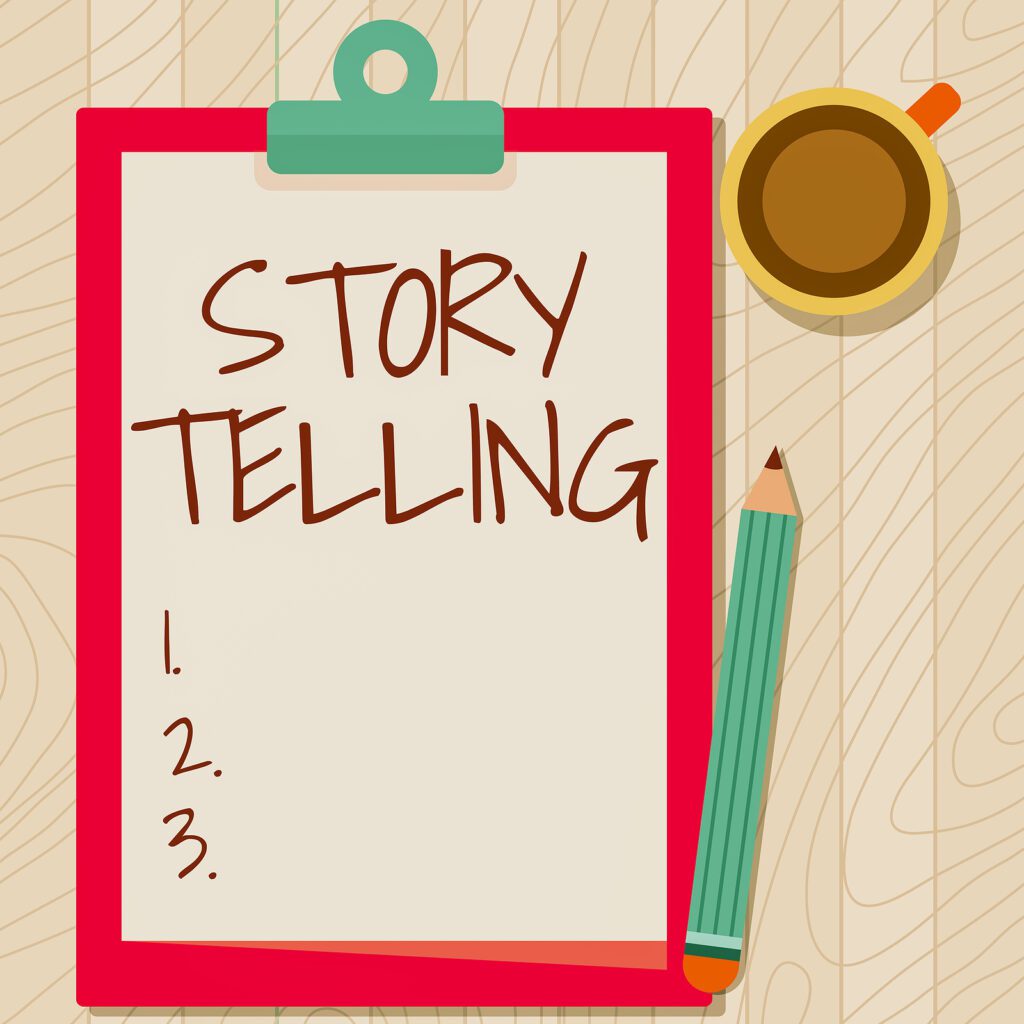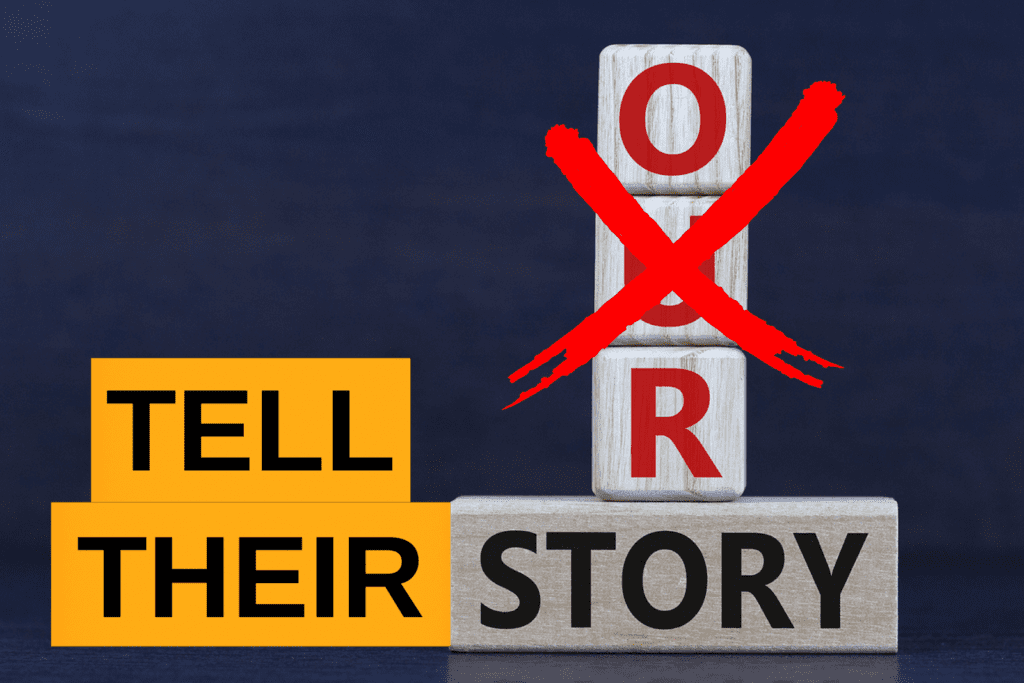Creating a Better Marketing One-Liner Message

What do you say when someone asks you what you do for a living?
Do you tell them your company name and a quick description like “I help people downsize”?
What if you could still say something short and sweet but move them to want more information?
What’s a One-Liner?
Most people have heard of an elevator pitch, a scripted response that you give people who ask you this type of question.
It’s also called a one-liner. Seems simple, right?
But, many people find putting their business benefits and services into a one or two-sentence presentation challenging.
The good news is that it doesn’t have to be that difficult if you have an easy framework to work from. The key is creating a message that people actually want to hear.
So, let’s start with the most effective tool to catch people’s attention in any scenario.
Storytelling.

Building a One-Liner Using Storytelling
Storytelling is effective because it draws a person into a story they can relate to, human to human, especially if it’s a problem they’re suffering from too.
Screenwriters use one-liners every day to pitch their script stories to producers.
It’s the description you hear when you watch a quick movie trailer clip. A synopsis of the character, the problem they are trying to overcome and hopefully, how they get to that happy ending.
If it’s done right, it’ll hook you into buying that expensive movie ticket. Your business isn’t any different.
Just because the service or product you offer doesn’t have Brad Pitt pitching the solution, you still have a valuable story to tell.

It’s Not About Grandpa
The biggest mistake that businesses make though, is that they think the story is about them. So, they talk about how many years they’ve been in business, how their grandfather started it from the back of his sporty covered wagon in 1899, or how many awards they’ve won over the years.
That’s all fine and dandy, but your customer has moved on to more interesting things after about 2 seconds of reading or seeing the message.
Why? Because we humans are wired to focus primarily on things that will fix our own problems or can support our survival in some way.
Processing information takes energy. The brain will automatically move onto other things to conserve energy if something’s not directly tied to our survival.
Donald Miller, the New York Times best-selling author of Storybrand and Marketing Made Simple, two of my favorite go-to marketing books, says the key to keeping a person’s attention is to make your customers the hero of their story.

Be Their Guide, Not The Hero
Your role is not the be the hero, it’s to be their guide. Once I truly understood this, my business was positively changed forever.
So, how do you build a better one-liner with all of this in mind? It’s simple.
There are three things you want to include in an effective one-liner.
What’s Their Pain Point?
First, it starts with a problem. What’s their pain point that your product or service solves? The most important part of this is that you get a clear understanding of the kind of feelings the customer has from that problem.
In terms of downsizing, do they feel frustrated, overwhelmed, angry about change, or scared? It’s not just the senior either. You may be serving families of seniors that are dealing with a different set of pain points. Things like frustration about their parents not wanting to give up their treasures, communication challenges, shifting parent/child roles, etc.

The Solution Your One-Liner Provides
So, start your one-liner (usually 2-3 short sentences) with a statement about the pain points your business was created to solve.
Something like “Downsizing can create an enormous sense of overwhelm and frustration for seniors and their families.” Instantly, people will recognize and relate to this, often going back to personal memories of problematic moves they’ve personally experienced in their own family. Now, you’ve got their attention.
Next write a sentence about how your company’s solution can take that pain away and try to be specific, without industry jargon or flowery words.
“At XYZ Downsizing, our compassionate, friendly team takes the guesswork and stress out of facilitating a downsizing move….”

What’s the Meaningful Result?
And the third portion is simply the meaningful result that will rock their world when that solution is experienced. “…, so our clients can sit back, relax, and enjoy their new home.”
Put it all together and say it out loud. Often we write things that don’t flow as naturally as we’d like and saying it out loud helps us fine-tune our message.
The point of the one-liner is to be able to use it quickly and comfortably whenever you have a conversation at a networking event or even the grocery store.
So, if it doesn’t sound like something you’d say in a normal conversation, continue to tweak it until you can memorize it and make it your own.
The one-liner isn’t just for conversations though. It’s also a great thing to have in print on the back of your business card or any other form of marketing you’re doing.
Sticking with this simple formula of “Problem/Feeling – Solution You Provide – Happy Result” should be applied throughout your marketing messaging, not just one-liners. But, it’s a start, right?
I’ll be talking more about how you can dial in your marketing messaging in more detail in a future post, so stay tuned!
For information on more downsizing-related courses, click here!
Deborah

P.S. Don’t forget to check out my new courses “Psychology Behind Downsizing” and “Tips and Strategies for a Stress-Free Retirement Community Move” written for seniors, their families, and senior service-related professionals like you!
